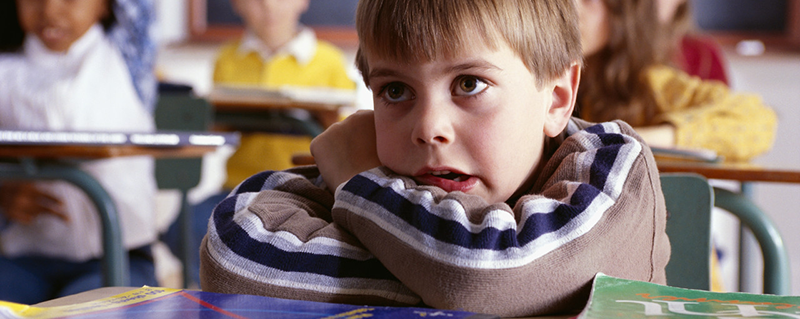May 29, 2018
Has Childhood Become Too Stressful?

Many professionals across multiple disciplines (education, psychology, psychiatry, and education, to name a few) are worried that childhood has become too stressful.
One lens into increasing levels of youth stress comes from the Cooperative Institutional Research Program (CIRP), housed at the Higher Education Research Institute at UCLA. CIRP conducts annual surveys of college freshman in the fall, providing perspective on their point of entry into this educational benchmark. The conclusions drawn on the mental health of freshman in 2014, based on data collected from over 153,000 students, is both illuminating and troubling:
- Students’ self-rated emotional health, relative to other people their age, registered at 50.7 percent (with the scaling indicating that they believe nearly half of youth their age have better emotional health), which is the lowest level recorded by CIRP in the 49 years that the survey has been administered, and represents a drop of 2.3 percent from the prior year.
- A similar pattern was observed for depression, as 9.5 percent of students reported that they “frequently” felt depressed, also a new low in the history of the CIRP Freshman Survey — and 3.4 percentage points higher than the previous low, which was recorded in 2009.
It’s important to recognize that the CIRP report is not the only sounding of the bell. One research organization that has been a leader in documenting these trends and the consequent effects of youth is Challenge Success, located within the Stanford Graduate School of Education. A recent book by co-founder Denise Pope, PhD, and colleagues suggests that our youth today is becoming “overloaded and underprepared,” with increasing levels of stress compromising student well-being — both physical and mental — while undermining their ability to experience full engagement in their schooling and balance in their lives.
One of the interesting approaches the Challenge Success team takes is to identify decreases in free time in childhood as a consequence of overscheduled extracurricular activities and ill-advised levels of homework. Some of the insights gained from their research paint a picture of kids who are pushed to the brink with little time for what Challenge Success refers to as “PDF” — Playtime, Down Time, and Family Time:
- While extracurricular activities can be a wonderful opportunity for youth, they can be counterproductive if they chew up too much time. They report that participating in over 15 to 20 hours of extracurricular activities was associated with higher levels of stress, depression, and anxiety, and lower amounts of regular sleep. So while there are many positives associated with extracurriculars, excessive participation is not a good thing.
- The lack of sleep noted above is not just due to extracurricular activities. Excessive homework is also a time eater, especially when research has shown that exceeding thresholds (a rule of thumb being multiplying 10 minutes of homework by the relevant grade to get the optimal level — such that, as an example, 5th graders should not have more than 50 minutes of homework per night). It’s certainly not uncommon for school surveys to show youth spending over 3 hours a night on homework and far exceeding suggestions. Combining the time in school, time required for homework, and time spent in extracurriculars begins to shrink the amount of time available for sleep, as evidenced by many suggestions that many youth today simply do not get the amount of recommended sleep every night.
- Finally, despite decades of research that show the protective value of devoted family time for emotional well-being in childhood and adolescence, all of these forces are also squeezing the time that youth can spend with their families.
As we consider the work of organizations like Challenge Success, it’s clear that there are many forces — structural as well as psychological — which are logical suspects for the declining levels of emotional health we are seeing in our current cohorts of college freshman. The Challenge Success group has argued that such stress undermines student engagement and decreases the opportunities to learn to love learning. The CIRP data are consistent with this, as the 2014 report demonstrates sobering links between student depression and tried and true indicators of engagement, with depressed youth reporting elevated rates of arriving at class late, falling asleep in class, and being bored in class.
So what do we do as a culture? It would take a dedicated effort, but a good start is to collectively reduce the time pressures to give youth more balance in their daily lives and allow for more PDF time which is not just protective but proactive in terms of cultivating healthy and happy youth who will arrive at college excited to learn and physically and mentally ready to do so. Reflecting on the progress made by organizations like Challenge Success in partnering with schools and parents to strive overtly toward this goal provides one example of ways to reduce the excessive stress that is affecting more and more youth.


